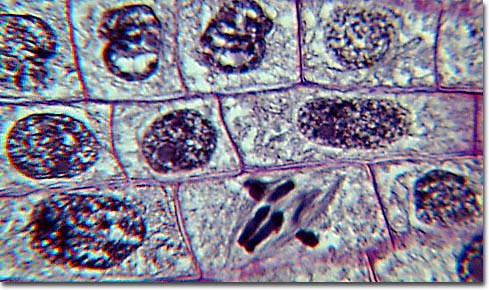
The nuclear envelope surrounding the nucleus consists of two lipid bilayers with pores. It surrounds the nucleoplasm within. On the inner surface are attachment sites for protein filaments that anchor the DNA molecules and keep them organized.
The nucleolus is located within the nucleus. The nucleolus appears as a darker globular mass. It is a region where subunits of ribosomes are prefabricated before shipment out of the nucleus.
Chromatin refers to the cell's total collection of DNA and associated proteins. A chromosome is an individual DNA molecule and its associated proteins. DNA is duplicated and condensed before cell division occurs.
REVIEW: An organelle found in the nucleus is a� �
REVIEW: Scientists use the word "chromosome" to describe�
PREVIOUS
NEXT
LECTURE 4 INDEX
MAIN INDEX